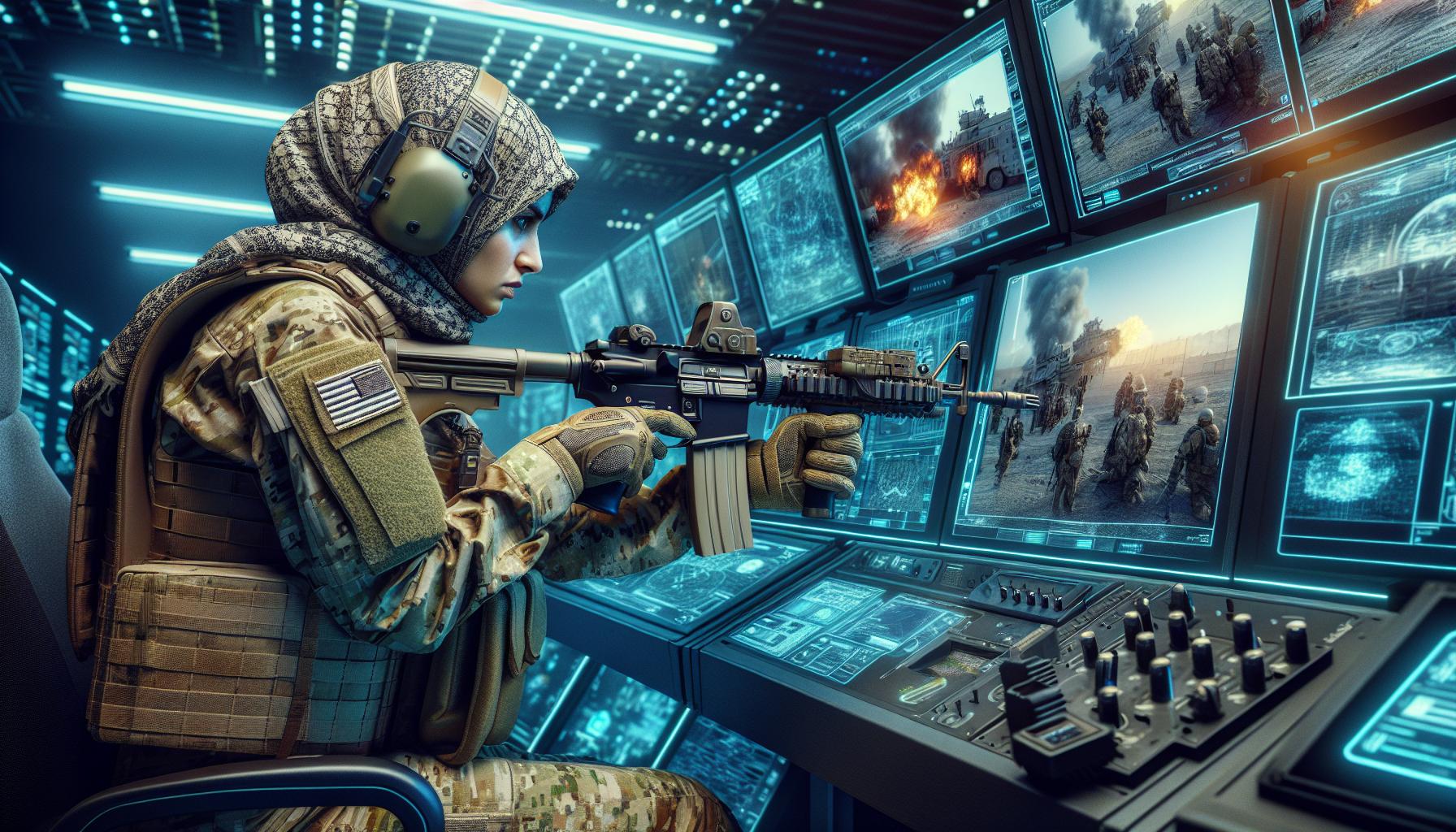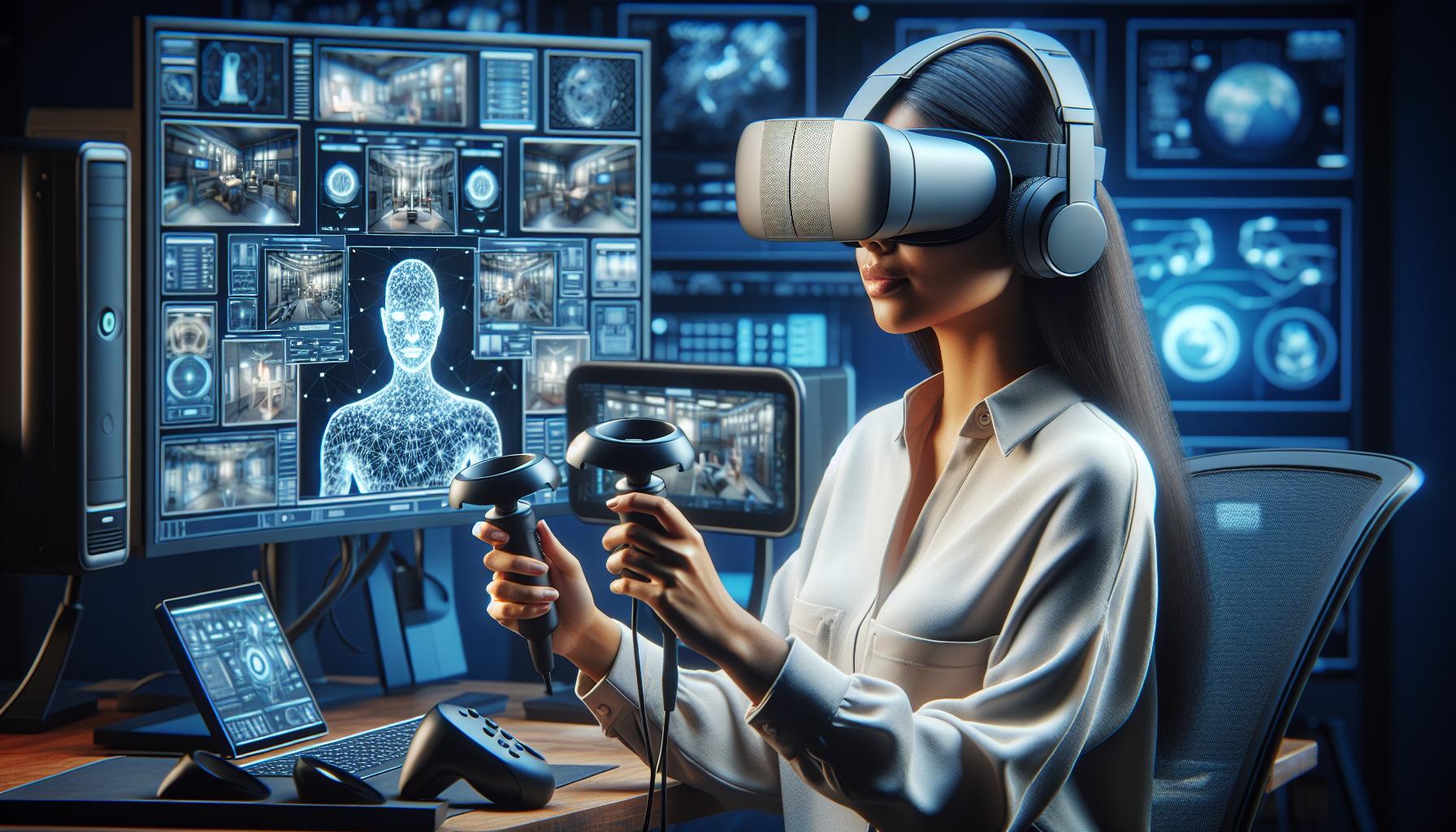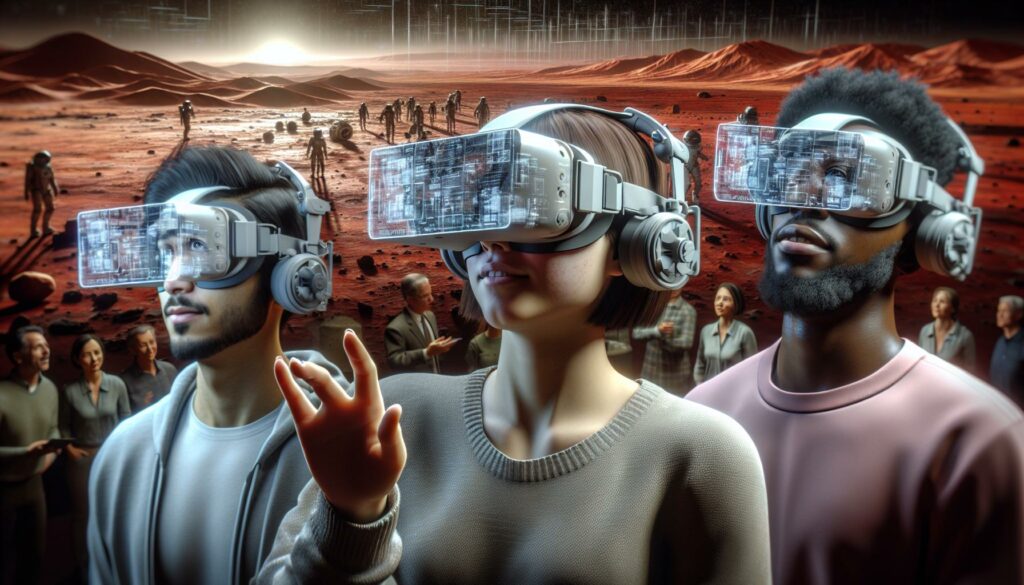Ever wondered what it feels like to walk on Mars or perform heart surgery without the real-world risks? Simulated environment make these seemingly impossible experiences possible by creating artificial yet realistic settings that mirror real-world scenarios. From pilot training to scientific research these virtual worlds have revolutionized how people learn practice and experiment.
In today’s digital age simulated environment have become increasingly sophisticated thanks to advances in technology. They’re not just fancy video games – they’re powerful tools that help surgeons perfect their techniques astronauts prepare for space missions and architects visualize buildings before construction begins. Companies and educational institutions worldwide are embracing these virtual spaces to provide safe controlled environments for training innovation and experimentation.
Simulated Environment
A simulated environment recreates real-world conditions in a controlled digital or physical space. These environments replicate specific scenarios, physics or interactions to provide users with authentic experiences without actual risks.
Key Components of Simulation
The core elements of a simulated environment include input devices, processing units, output systems, algorithms and feedback mechanisms. Input devices capture user actions through sensors, controllers or specialized equipment like flight yokes. Processing units analyze data in real-time using physics engines and artificial intelligence to calculate responses. Output systems deliver visual, auditory and haptic feedback through displays, speakers and force-feedback devices. Environmental factors like gravity, weather or material properties get calculated by specialized algorithms. Monitoring systems track user performance and provide immediate feedback for assessment or improvement.
Types of Simulated Environments
Virtual Reality (VR) simulations immerse users in computer-generated 3D worlds through head-mounted displays and motion controllers. Augmented Reality (AR) overlays digital elements onto real environments using smartphones or smart glasses. Mixed Reality (MR) combines physical and digital objects that interact in real-time. Physical simulations use mechanical systems like flight simulators or surgical mannequins. Live simulations involve real people roleplaying scenarios in staged environments. Constructive simulations operate autonomously based on programmed rules and AI behaviors. Gaming engines create interactive environments for entertainment and serious training applications.
Applications Across Industries

Simulated environments serve as transformative tools across multiple sectors, enabling risk-free training and experimentation. These digital replicas create authentic scenarios for professionals to enhance their skills and decision-making capabilities.
Military and Defense Training
Military organizations leverage simulated environments to prepare personnel for combat scenarios and tactical operations. Soldiers engage in virtual battlefield simulations that replicate actual terrain, weather conditions, and enemy movements. Combat simulators train teams in weapons handling, mission planning, and strategic communication without expending physical resources. Advanced simulation platforms incorporate haptic feedback systems to create realistic recoil sensations during weapons training. Virtual command centers enable officers to practice coordinating large-scale operations across multiple units.
Healthcare and Medical Education
Medical professionals utilize simulation technology to master complex procedures and emergency responses. Surgeons practice intricate operations on virtual patients using haptic-enabled tools that mimic tissue resistance and anatomical variations. Medical students learn diagnostic skills through interactive patient scenarios with programmable symptoms and vital signs. Virtual anatomy labs provide detailed 3D models of human body systems for in-depth study and dissection. Emergency response teams rehearse mass casualty scenarios in virtual hospitals with realistic patient interactions.
Aviation and Space Exploration
Aerospace simulation technology replicates the challenges of flight and space missions. Pilots master aircraft controls in full-motion simulators that reproduce cockpit environments and flight dynamics. Astronauts train for spacewalks in neutral buoyancy laboratories that simulate zero-gravity conditions. Space mission control teams practice launch sequences and emergency procedures using real-time mission simulators. Flight crews learn emergency protocols through scenarios that replicate system failures and adverse weather conditions.
Benefits of Using Simulated Environments

Simulated environments deliver significant advantages across industries by creating controlled scenarios for training education research. These digital ecosystems enable organizations to maximize learning outcomes while minimizing risks costs.
Risk-Free Learning
Simulated environments create protected spaces for users to practice dangerous procedures without real-world consequences. Medical students perform complex surgeries in virtual operating rooms enabling them to refine techniques before working with actual patients. Flight simulators let pilots experience emergency scenarios aircraft malfunctions without endangering lives or equipment. Military personnel train combat maneuvers in digital battlefields mastering strategies tactics safely. Manufacturing teams test hazardous material handling protocols through immersive simulations preventing workplace accidents. This risk-free approach builds confidence competence systematically.
Cost Effectiveness
Organizations reduce operational expenses significantly through simulation-based training programs. Virtual environments eliminate costs associated with physical equipment maintenance replacement with digital assets costing 60-80% less. Training facilities achieve 40% reduction in overhead by switching to simulators versus traditional methods. Companies save on travel expenses by conducting remote training sessions across multiple locations simultaneously. Equipment damage costs decrease by 75% when learners practice on virtual systems instead of actual machinery. Insurance premiums drop 25-35% for organizations implementing simulation-based safety training programs.
| Cost Reduction Category | Savings Percentage |
|---|---|
| Equipment Costs | 60-80% |
| Facility Overhead | 40% |
| Equipment Damage | 75% |
| Insurance Premiums | 25-35% |
Technology Behind Simulation

Modern simulation technology combines advanced hardware computational systems software algorithms to create immersive experiences. These systems integrate multiple components that work together to generate realistic sensory feedback.
Virtual Reality Systems
VR systems employ specialized hardware components including head-mounted displays (HMDs) motion tracking sensors haptic feedback devices. The core processing unit renders 3D graphics at 90+ frames per second through powerful GPUs while maintaining low latency of 20 milliseconds or less. Advanced VR platforms utilize:
- Positional tracking through external sensors or inside-out tracking cameras
- Motion controllers with 6 degrees of freedom for natural interaction
- Eye-tracking technology enabling foveated rendering optimization
- Spatial audio systems creating directional sound environments
- Force feedback mechanisms providing tactile sensations
Augmented Reality Integration
AR technology overlays digital content onto the physical world through sophisticated tracking computer vision algorithms. Modern AR systems leverage:
- Simultaneous Localization Mapping (SLAM) for environmental understanding
- Depth sensors creating accurate spatial mapping
- Machine learning models detecting real-world objects
- Inertial Measurement Units tracking device orientation
- Light estimation algorithms matching virtual object illumination
The processing pipeline includes real-time video capture image analysis geometric registration rendering at 60+ FPS. Mobile AR platforms utilize ARCore ARKit frameworks while advanced headsets incorporate waveguide optics transparent displays for improved visual fidelity.
Challenges and Limitations
Simulated environments face several critical obstacles that impact their effectiveness and widespread adoption. These challenges range from technical limitations to user-related issues that affect the overall simulation experience.
Technical Constraints
Hardware processing limitations create performance bottlenecks in complex simulations, resulting in delayed responses or reduced visual quality. Graphics cards struggle to maintain consistent frame rates when rendering detailed environments with multiple interactive elements. Network latency affects multi-user simulations, causing synchronization issues between participants. Data storage requirements pose challenges for organizations implementing large-scale simulations, particularly those involving high-resolution assets or extensive environmental details. The computational demands of physics engines limit the accuracy of object interactions, especially in scenarios requiring precise physical calculations. Current display technologies restrict the field of view in virtual environments, reducing immersion levels for users.
User Adaptation Issues
Users often experience physical discomfort during extended simulation sessions, including motion sickness, eye strain, or disorientation. The disconnect between virtual movement and physical stillness triggers vestibular conflicts in many participants. Learning curves vary significantly among different user groups, with older adults showing longer adaptation periods than younger users. Psychological barriers emerge when users struggle to suspend disbelief in artificial environments. Physical limitations affect accessibility, as some simulations require specific mobility capabilities or hand coordination. Cultural differences impact user perception and interaction patterns within simulated spaces. The psychological impact of repeated exposure to high-stress scenarios in training simulations creates cognitive fatigue among regular users.
Future of Simulated Environments
Simulated environments continue to evolve with rapid technological advancements transforming how people interact with digital spaces. These innovations create new possibilities for training, entertainment, research.
Emerging Technologies
Advanced quantum computing systems enable more complex simulations with unprecedented processing capabilities. Artificial Intelligence enhances simulation realism through adaptive scenarios, natural language processing, and dynamic response systems. Brain-computer interfaces allow direct neural connections for seamless interaction within simulated spaces. Holographic displays project high-resolution 3D images without requiring headsets or special equipment. 5G and upcoming 6G networks facilitate ultra-low latency connections for real-time collaborative simulations across multiple locations. Integration of blockchain technology ensures secure data exchange and verification in shared virtual environments.
Potential Applications
Space exploration missions utilize simulated environments for astronaut training and Mars colonization planning. Medical institutions implement digital twins of organs for personalized treatment modeling and surgical preparation. Smart cities employ simulation platforms to optimize traffic flow, energy distribution, and emergency response systems. Educational institutions create immersive historical recreations for interactive learning experiences. Manufacturing facilities use digital replicas to test production processes and predict maintenance needs. Environmental scientists analyze climate change scenarios through advanced ecological simulations. The gaming industry develops neural interface systems for direct thought-controlled gameplay experiences. Agricultural systems utilize predictive modeling for crop optimization and resource management.
Training in a Simulated Environment
Simulated environment represent a groundbreaking shift in how we approach training education and research across multiple industries. These digital ecosystems have proven their worth by providing safe cost-effective and highly efficient ways to develop skills and test scenarios without real-world consequences.
As technology continues to evolve with innovations in quantum computing AI and advanced visualization systems the potential applications of simulated environments will expand exponentially. Despite current technical limitations and user-related challenges the future of simulation technology promises even more immersive and accessible experiences.
The transformative impact of simulated environment on industries from healthcare to aerospace demonstrates their crucial role in shaping the future of professional training and development. They’ll continue to bridge the gap between theoretical knowledge and practical experience while pushing the boundaries of what’s possible in virtual spaces.

